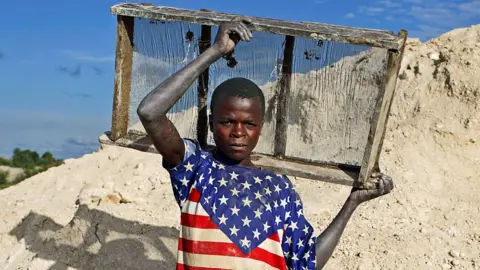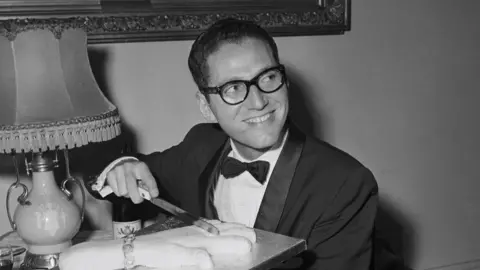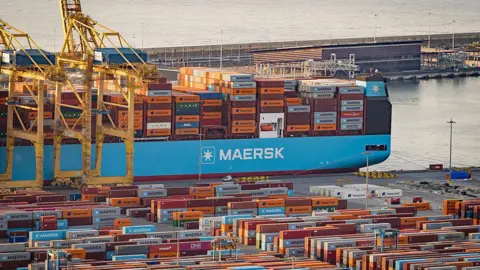US-EU Trade Deal: 15% Tariffs on European Exports
Mega-Deal or Mega-Mistake? Trump Strikes Massive Trade Pact with the EU
**Did President Trump just pull off the biggest trade deal in history—or did he just hand the EU a winning card?** The world watched with bated breath as the US and the EU, two economic titans representing nearly a third of global trade, clashed—then seemingly kissed and made up. But was it a genuine victory for both sides, or a cleverly disguised triumph for one? Read on to find out.
 A Scottish Summit and a Shocking Compromise
The air crackled with tension at Turnberry, Trump's Scottish golf resort. Amidst the rolling green fairways and the Scottish drizzle, President Trump and European Commission President Ursula von der Leyen engaged in make-or-break negotiations. The stakes? A looming 30% US tariff on all EU goods – a potential economic earthquake. But then, a stunning announcement: a deal was struck.
A Scottish Summit and a Shocking Compromise
The air crackled with tension at Turnberry, Trump's Scottish golf resort. Amidst the rolling green fairways and the Scottish drizzle, President Trump and European Commission President Ursula von der Leyen engaged in make-or-break negotiations. The stakes? A looming 30% US tariff on all EU goods – a potential economic earthquake. But then, a stunning announcement: a deal was struck.
 The agreement? A 15% US tariff—half of the initially threatened amount. In return, the EU pledged to open its markets to US exporters, offering zero tariffs on select products. Trump declared it "a good deal for everybody," while von der Leyen hailed the deal's "stability." But the devil, as they say, is in the details…
A $600 Billion Investment… and a Few Unanswered Questions
The agreement? A 15% US tariff—half of the initially threatened amount. In return, the EU pledged to open its markets to US exporters, offering zero tariffs on select products. Trump declared it "a good deal for everybody," while von der Leyen hailed the deal's "stability." But the devil, as they say, is in the details…
A $600 Billion Investment… and a Few Unanswered Questions
 The deal goes beyond tariffs. The EU committed to a staggering $600 billion investment in the US, including substantial spending on American military equipment and a massive $750 billion investment in American energy sources. This investment, Von der Leyen highlighted, would reduce Europe's dependence on Russian energy. But is it *really* a win-win?
Some products, like aircraft, certain chemicals, and specific agricultural goods, remain tariff-free. A separate semiconductor deal may be on the horizon. However, a pre-existing 50% US tariff on steel and aluminum will remain. This leaves many wondering: what did the EU *really* gain?
The deal goes beyond tariffs. The EU committed to a staggering $600 billion investment in the US, including substantial spending on American military equipment and a massive $750 billion investment in American energy sources. This investment, Von der Leyen highlighted, would reduce Europe's dependence on Russian energy. But is it *really* a win-win?
Some products, like aircraft, certain chemicals, and specific agricultural goods, remain tariff-free. A separate semiconductor deal may be on the horizon. However, a pre-existing 50% US tariff on steel and aluminum will remain. This leaves many wondering: what did the EU *really* gain?
 Winners and Losers? The Fine Print Reveals All
While Trump celebrated a historic victory—a deal he claims is the largest ever—the EU's gains are less apparent. Von der Leyen’s emphasis on "rebalancing" the trade relationship hints at a more nuanced reality. The EU traditionally argued that the trade balance wasn't skewed, citing a higher volume of service exports to the US than imports. Did she simply speak Trump's language to secure the deal? We may need to dive deeper into the specifics to find the answers.
Winners and Losers? The Fine Print Reveals All
While Trump celebrated a historic victory—a deal he claims is the largest ever—the EU's gains are less apparent. Von der Leyen’s emphasis on "rebalancing" the trade relationship hints at a more nuanced reality. The EU traditionally argued that the trade balance wasn't skewed, citing a higher volume of service exports to the US than imports. Did she simply speak Trump's language to secure the deal? We may need to dive deeper into the specifics to find the answers.
 The Aftermath: Cautious Optimism and Lingering Concerns
European leaders reacted with cautious optimism. While welcoming the averted trade war, leaders like Irish Prime Minister Micheál Martin pointed out that tariffs remain higher than pre-conflict levels, adding costs and complexities to trade. German Chancellor Friedrich Merz highlighted the positive impact of stable trade relations on both sides of the Atlantic.
The Aftermath: Cautious Optimism and Lingering Concerns
European leaders reacted with cautious optimism. While welcoming the averted trade war, leaders like Irish Prime Minister Micheál Martin pointed out that tariffs remain higher than pre-conflict levels, adding costs and complexities to trade. German Chancellor Friedrich Merz highlighted the positive impact of stable trade relations on both sides of the Atlantic.
 But the questions linger: Was this a masterstroke of negotiation or a tactical retreat? Will the promised investments materialize? And what are the long-term implications for businesses and consumers on both sides of the Atlantic? The answers, like the details of the deal itself, are still unfolding.
What's Next? A Trade Deal Thriller Continues
The deal’s long-term impacts remain to be seen. The coming months will reveal the true winners and losers in this high-stakes trade game. Keep reading to stay informed on the unfolding story. The next chapters will undoubtedly be just as dramatic as the first. President Trump's continued presence in Scotland, with plans for further meetings and golf rounds, only adds to the intrigue!
But the questions linger: Was this a masterstroke of negotiation or a tactical retreat? Will the promised investments materialize? And what are the long-term implications for businesses and consumers on both sides of the Atlantic? The answers, like the details of the deal itself, are still unfolding.
What's Next? A Trade Deal Thriller Continues
The deal’s long-term impacts remain to be seen. The coming months will reveal the true winners and losers in this high-stakes trade game. Keep reading to stay informed on the unfolding story. The next chapters will undoubtedly be just as dramatic as the first. President Trump's continued presence in Scotland, with plans for further meetings and golf rounds, only adds to the intrigue!

Image 1

Image 2

Image 3

Image 4

Image 5

Image 6
Comments
Post a Comment